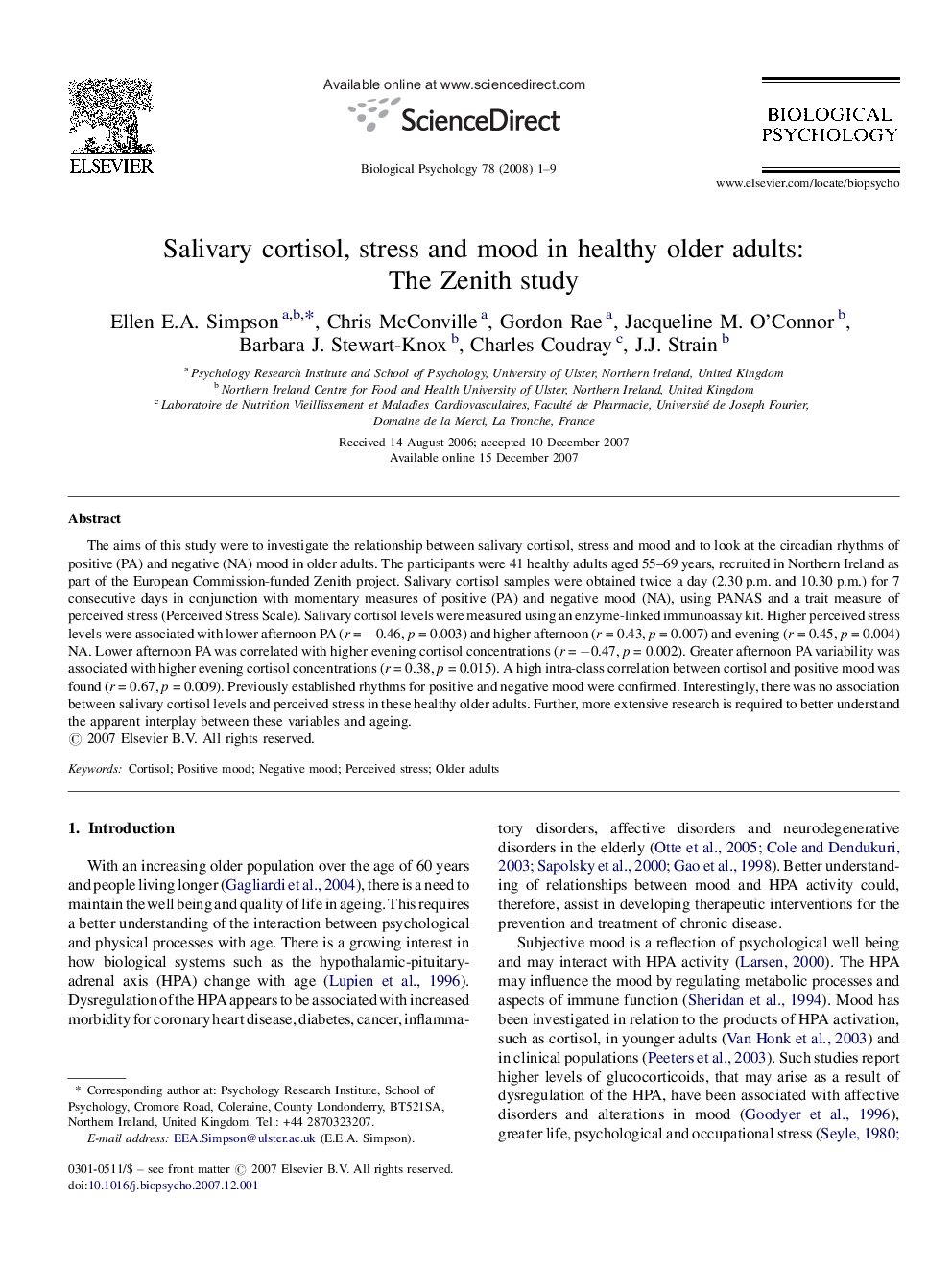| Article ID | Journal | Published Year | Pages | File Type |
|---|---|---|---|---|
| 921636 | Biological Psychology | 2008 | 9 Pages |
The aims of this study were to investigate the relationship between salivary cortisol, stress and mood and to look at the circadian rhythms of positive (PA) and negative (NA) mood in older adults. The participants were 41 healthy adults aged 55–69 years, recruited in Northern Ireland as part of the European Commission-funded Zenith project. Salivary cortisol samples were obtained twice a day (2.30 p.m. and 10.30 p.m.) for 7 consecutive days in conjunction with momentary measures of positive (PA) and negative mood (NA), using PANAS and a trait measure of perceived stress (Perceived Stress Scale). Salivary cortisol levels were measured using an enzyme-linked immunoassay kit. Higher perceived stress levels were associated with lower afternoon PA (r = −0.46, p = 0.003) and higher afternoon (r = 0.43, p = 0.007) and evening (r = 0.45, p = 0.004) NA. Lower afternoon PA was correlated with higher evening cortisol concentrations (r = −0.47, p = 0.002). Greater afternoon PA variability was associated with higher evening cortisol concentrations (r = 0.38, p = 0.015). A high intra-class correlation between cortisol and positive mood was found (r = 0.67, p = 0.009). Previously established rhythms for positive and negative mood were confirmed. Interestingly, there was no association between salivary cortisol levels and perceived stress in these healthy older adults. Further, more extensive research is required to better understand the apparent interplay between these variables and ageing.
